In this tutorial, I will show you how to recognize animations in PowerPoint and how to make the most of the Animations pane. Whether you are creating a simple presentation or a complex slideshow, understanding the animation features can make a difference in how your message is conveyed. Let's dive right in and explore the various ways to recognize animations and the steps to use the Animations pane.
Key Insights
Animations in PowerPoint are not only important for visually enhancing a presentation, they also help in structuring and presenting information in an engaging way. First of all: In the slide overview, you will see a small star that indicates animations are included in the slide. A small rectangle symbolizes animated objects and their sequence. The Animations pane is an excellent tool to manage and customize the animations.
Step-by-Step Guide
Recognizing Animations
To recognize animations on a slide, you can use the slide overview. When you open a slide with animations, you will see a small star indicating that animations are present.
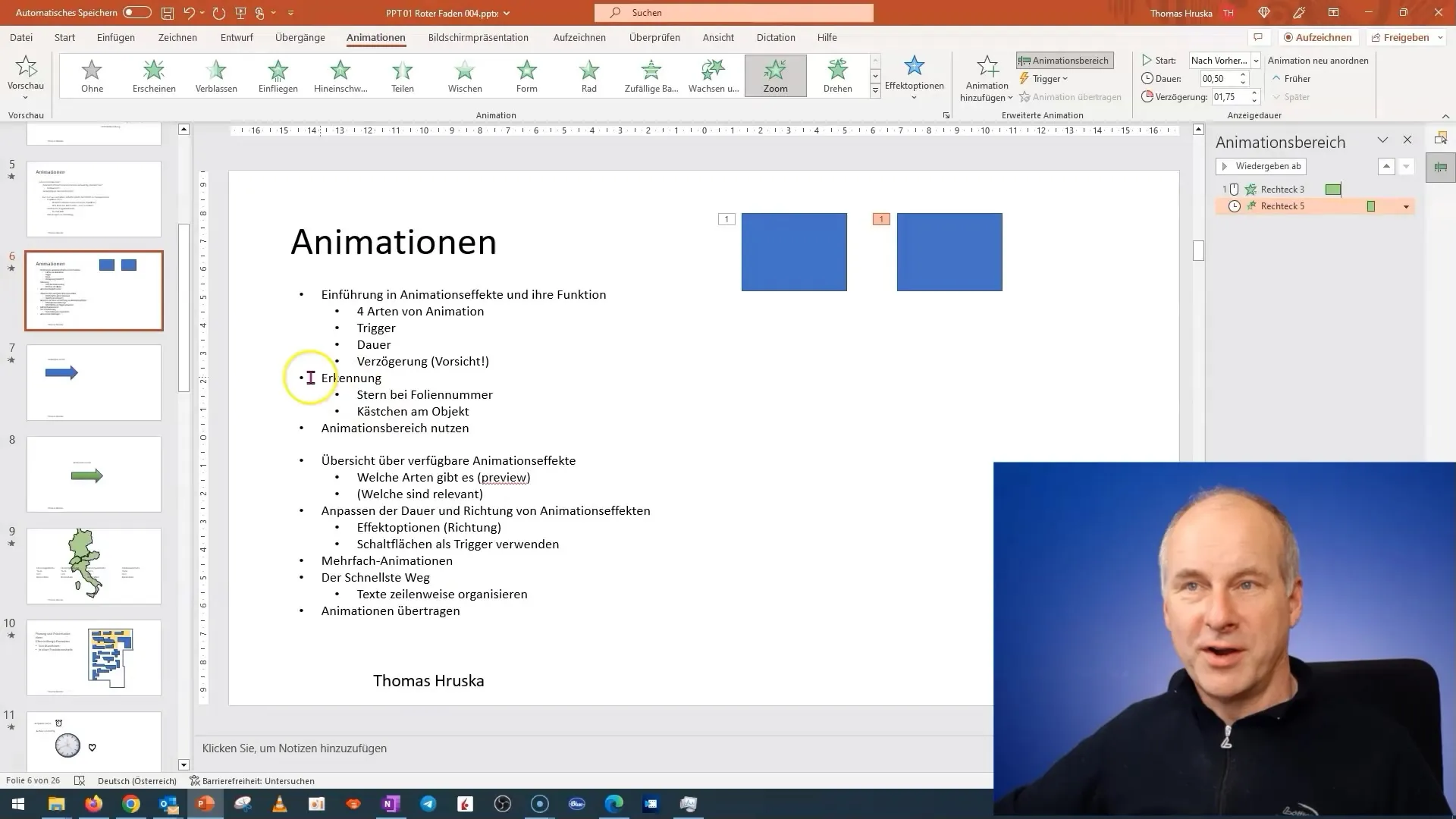
This visual indication is the first clue that you have animations on your slide. Make sure to go into the overview to get a quick look at all slides with animations.
Identifying Animated Objects
Once you have identified that a slide contains animations, you can identify the individual animated objects. A small rectangle will help you with this, which is displayed when you click on an animated object. This rectangle visualizes that it is an animated object and shows you the animation sequence.
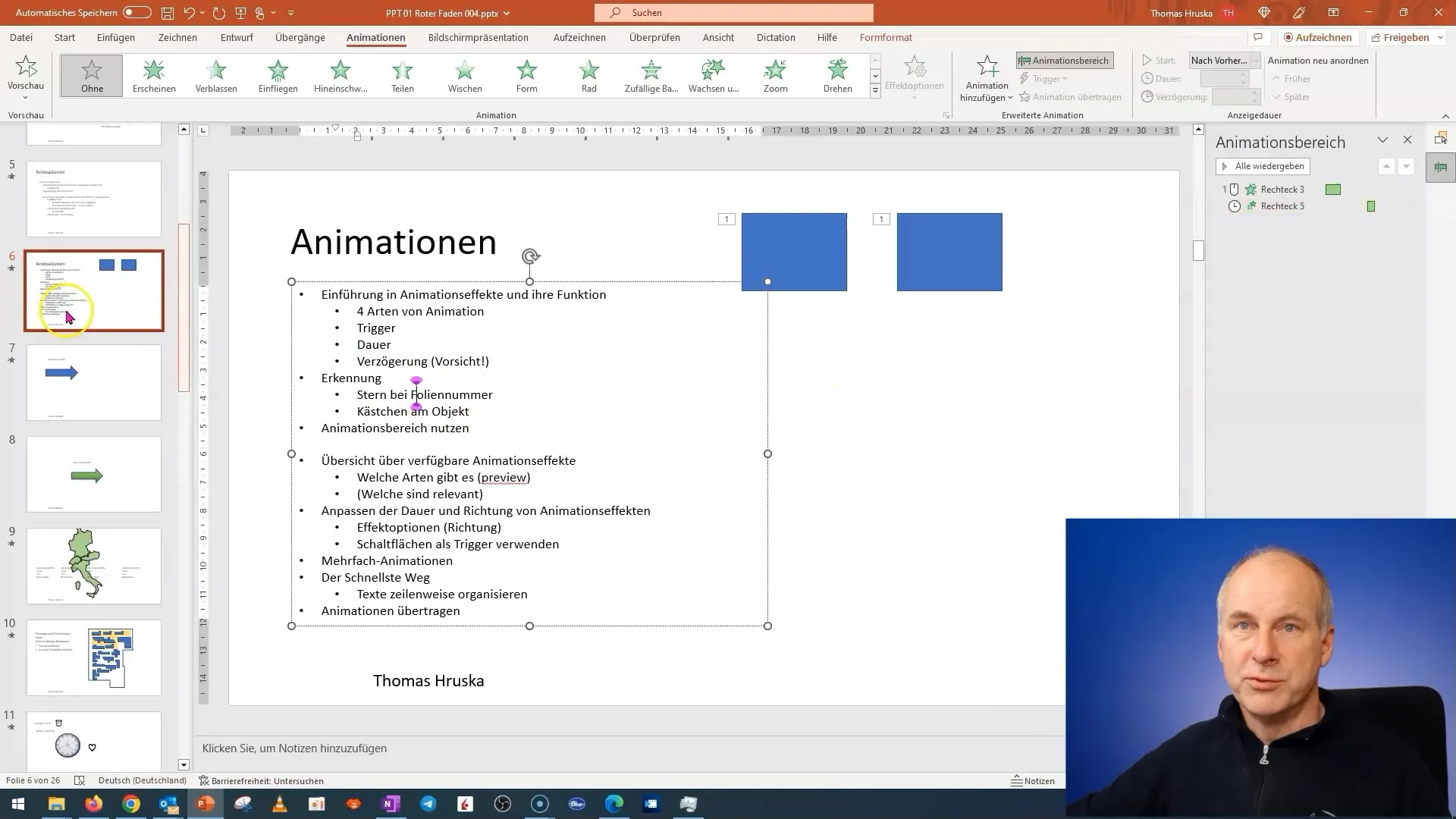
The numbers inside the rectangle illustrate the order in which the animations are played. For example, you may have a "1" and a "2", indicating that with the first mouse click, these two objects appear simultaneously. This way you can directly control the animation sequence.
Customizing Animations
If you want to customize an animation, you can remove the delay or change the trigger settings. You can do this by right-clicking on the (animated) object and selecting the appropriate options.
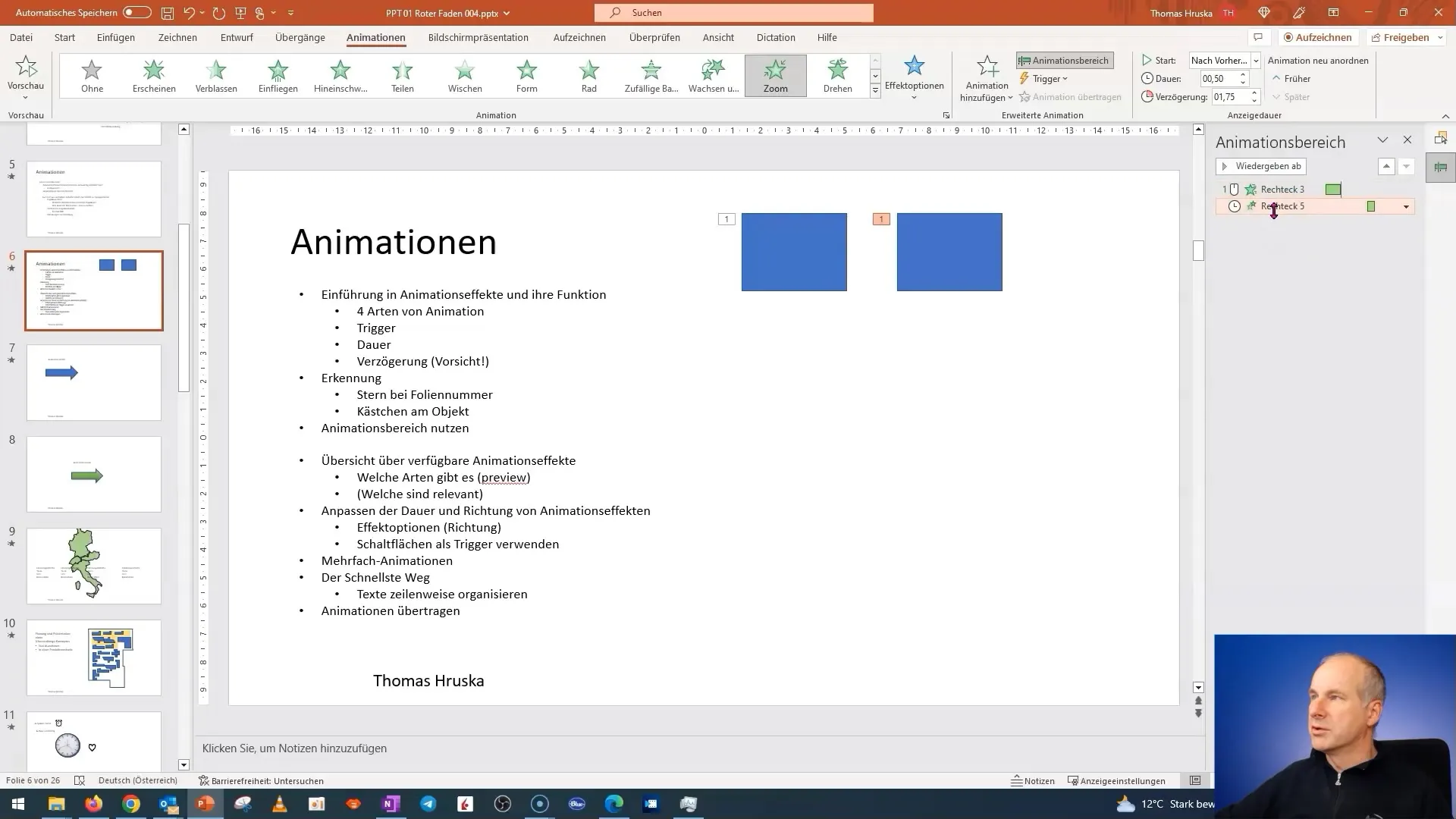
An important function is removing the delay. If you set the delay to "0" or set the trigger to "Mouse Click", the object will appear immediately with the next mouse click.
Previewing the Animation
To get an idea of how your animations will work during the presentation, you can use the preview function. Go to the Animations pane and select the desired animation.
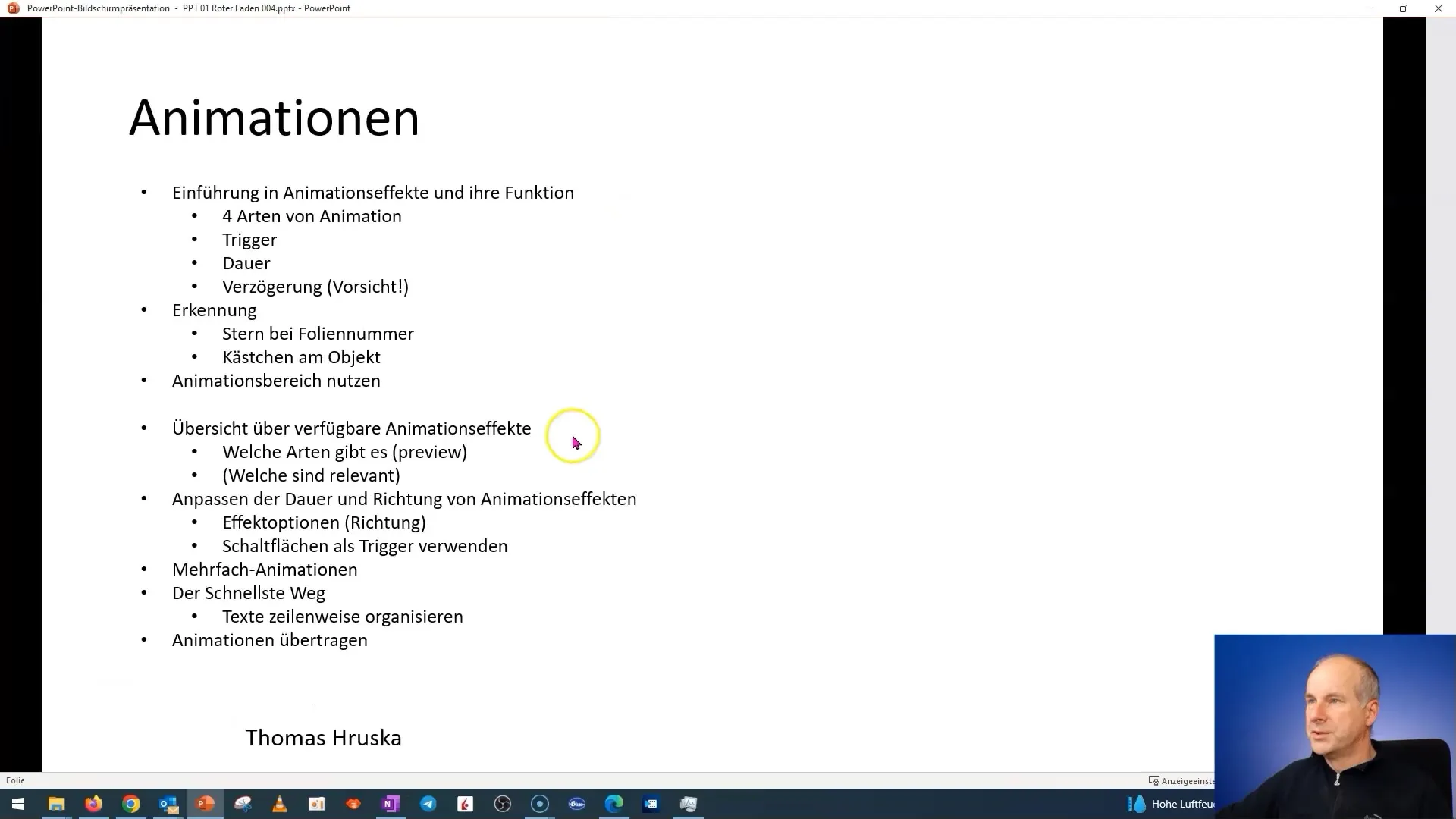
This way, you can test the effects of your changes live before delivering the presentation. Always ensure that transitions and fades are smooth to keep the audience's attention.
Deleting Animations
If you want to remove an animation from an object, you can click on the small rectangle indicating the animation and press the Delete key. Alternatively, you can select and remove the animation directly in the Animations pane.
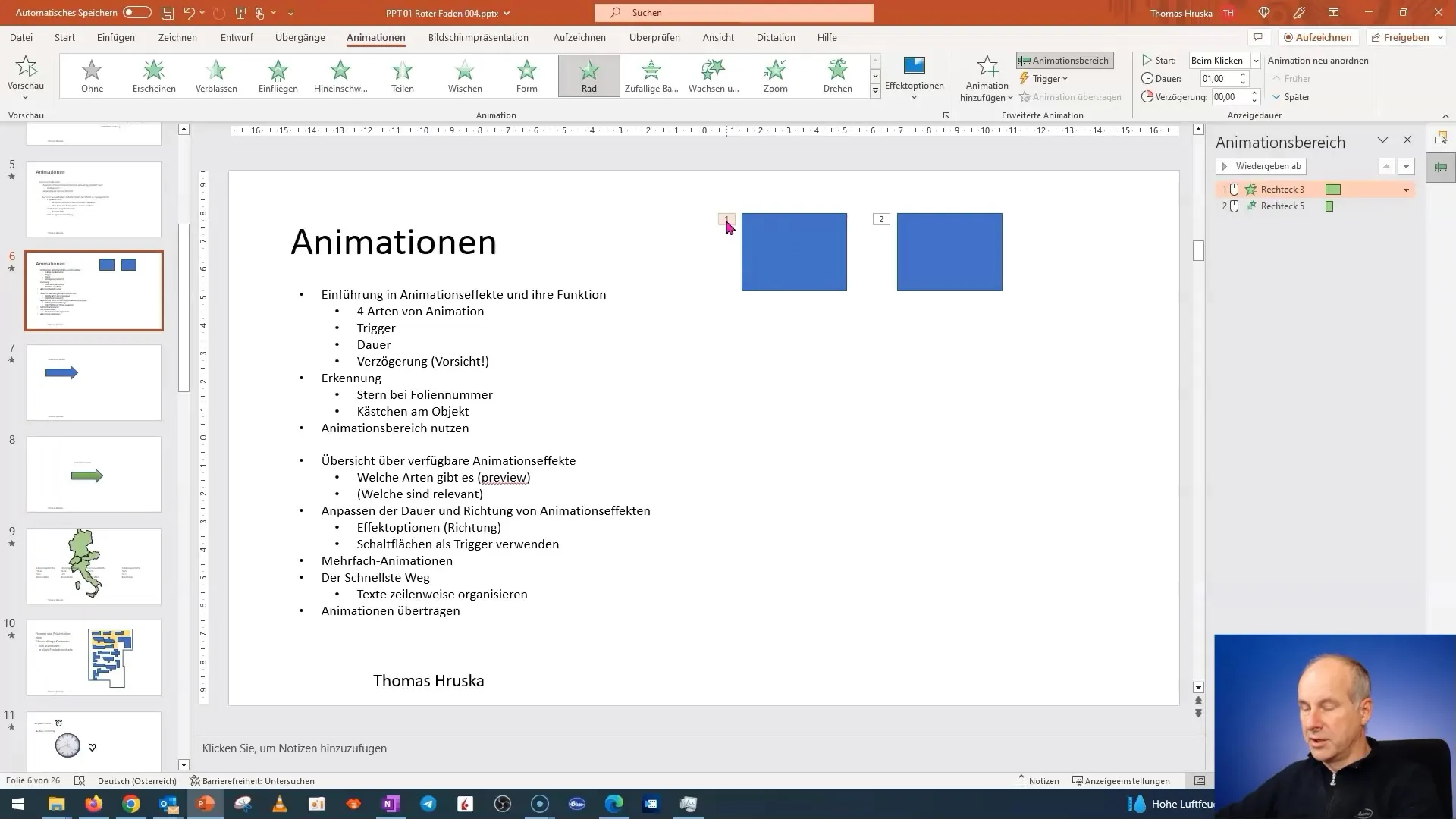
There are also other methods to delete animations in the Animations pane. This can be useful when you want to quickly revise the design of your presentation.
Using the Animations Pane
The Animations pane is an indispensable tool when it comes to keeping an overview of all existing animations in your presentation. It shows you which animations are active and in what order they will be played.
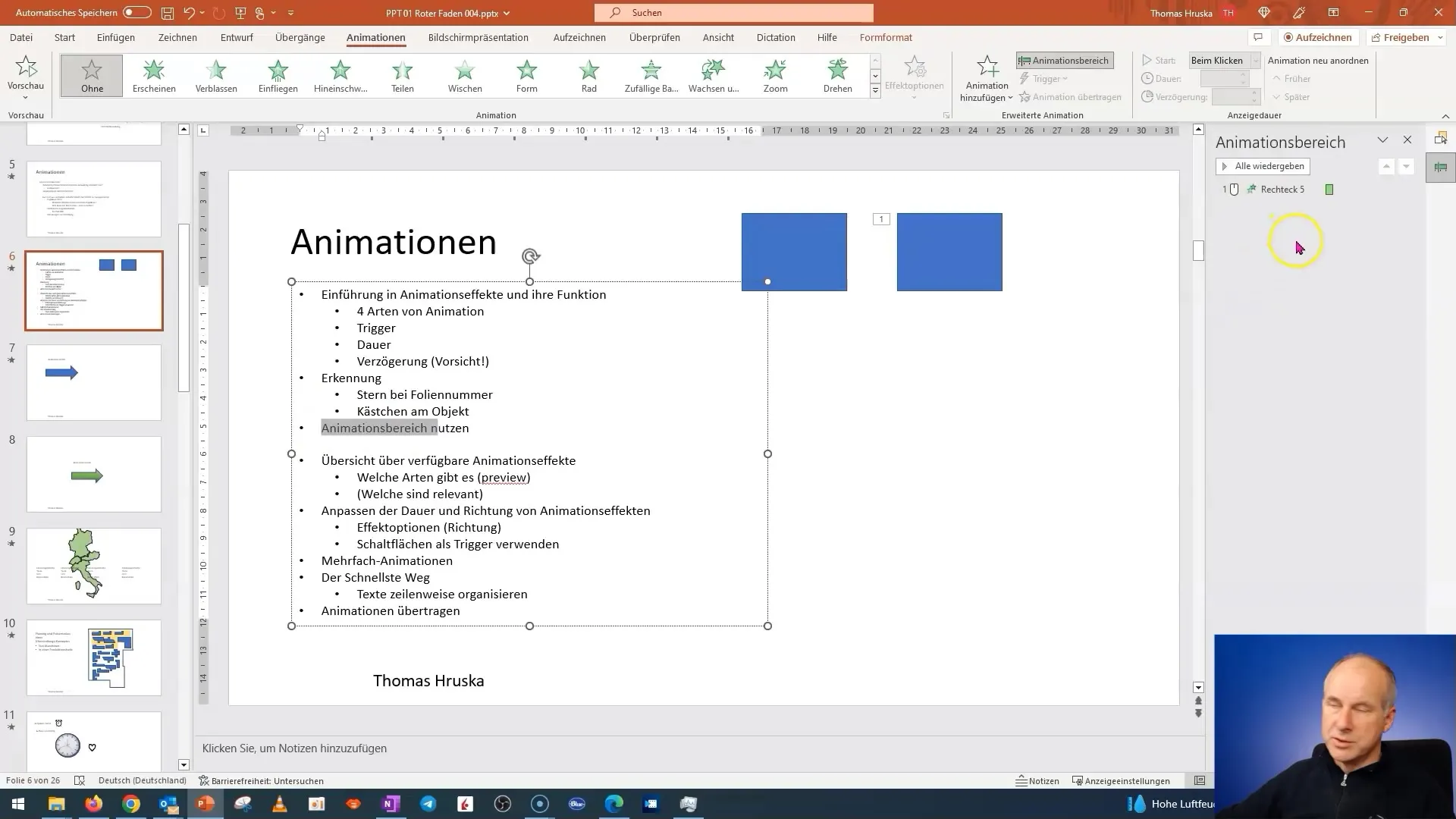
Here you can also rearrange animations by simply clicking and dragging them to the desired position. This allows you to have precise control over the sequence of your slides and their content during the presentation.
Further Options
In the next step, you should also familiarize yourself with the different types and effects of animations that PowerPoint offers. Whether you apply transitions, entrances, or motion effects, it is important to develop a good sense of which animations best suit your presentation style.
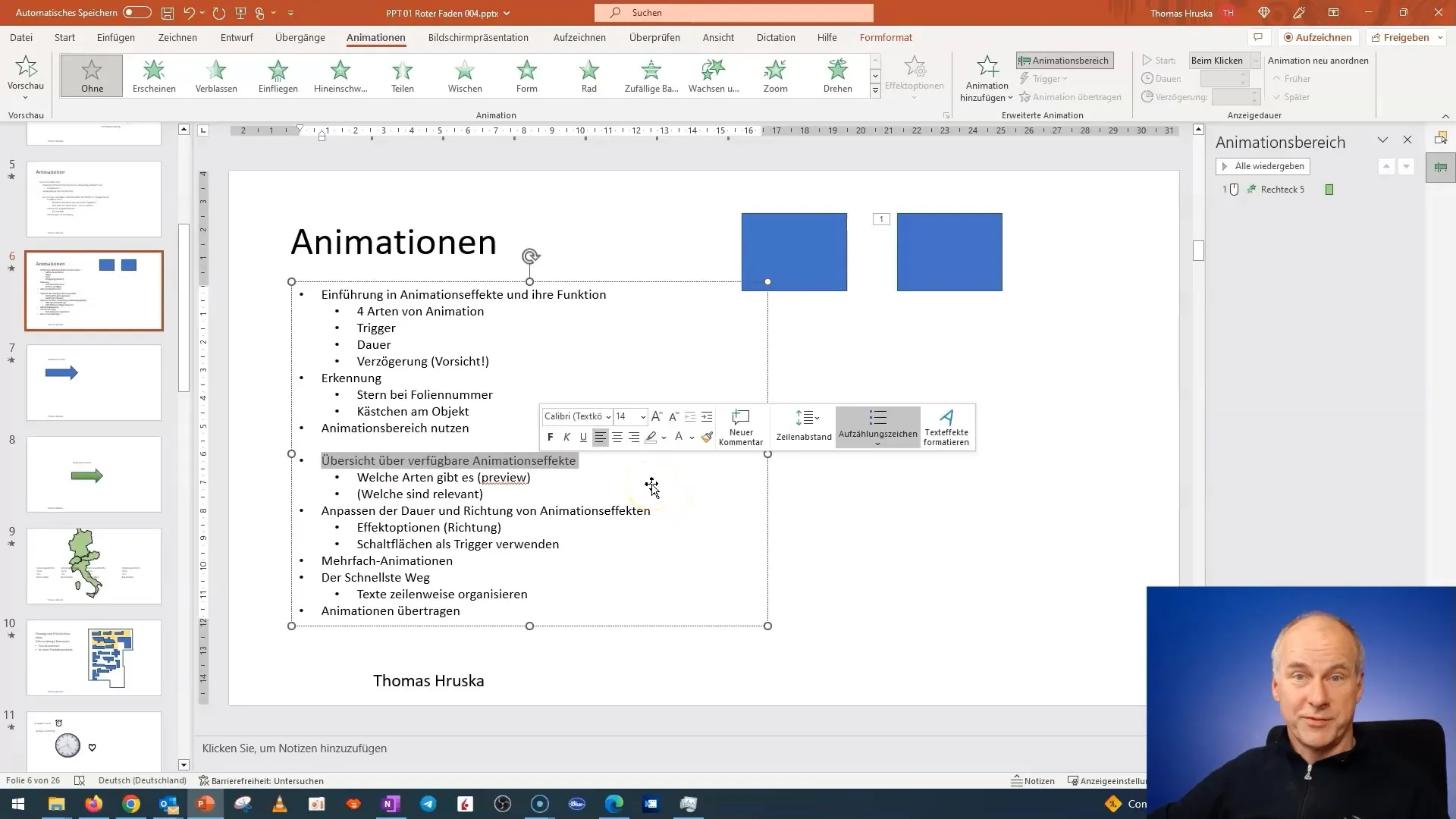
These basics are crucial to get a feel for the variety of animation possibilities and further immerse yourself in the subject. Even though we are only addressing the basics here, you can already achieve impressive results with them.
Summary
Animations can give structure and visual appeal to your presentation. With a proper understanding of PowerPoint's animation features, you can present information in a compelling way. Make sure to regularly use the slide overview and the animation area. Feel free to experiment with different types of animations to achieve the desired effect.
Frequently Asked Questions
How can I tell if there are animations on a slide?You will see a small star in the slide overview, indicating that animations are present.
How can I find out which objects are animated?A small rectangle shows animated objects and their playback order.
Can I change the order of animations?Yes, in the animation area, you can simply rearrange animations by dragging them.
How do I delete animations from an object?Click on the animation rectangle and press the delete key or use the options in the animation area.
What is the benefit of the animation area?The animation area gives you an overview of all animations and their sequence, allowing you to manage them.


